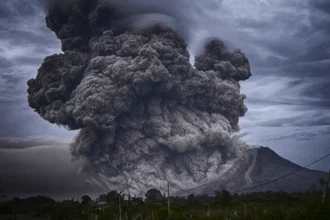The world saw Kabul collapse in August 2021, with the Taliban rapidly taking over Afghanistan. Another more grave problem was silently developing while world headlines concentrated on the political shocks: Taliban weapon smuggling. A large stockpile of contemporary U.S.-supplied military equipment was left unsecured during the disorderly U.S. military pullout and the fall-off of Afghan forces.
Among this gear were Black Hawk helicopters, Humvees, mine-resistant vehicles (MRAPs), and American-made M4 and M16 guns. Military analysts and intelligence services concur that the lack of a suitable retrieval strategy for this hardware resulted in an unstable and dangerous scenario. Not long after, data surfaced showing that most of this machinery had either been sold, stolen, or smuggled into the hands of extremist groups well outside of Afghanistan.
Confidential sources estimate that there are still about 500,000 military-grade equipment items missing. These goods are now thought to be part of a vibrant illicit market, therefore augmenting the reach and firepower of violent organizations all over the area. From a local security breach, Taliban weapons smuggling rapidly became a major worldwide concern.
Why did Taliban weapon smuggling grow so quickly?
Taliban weapon smuggling was greatly facilitated by the pace of their military advances. Afghan troops and security personnel routinely left their stations without opposition when the gang neared military bases and big towns. They left behind enormous volumes of weaponry, ammo, and vehicles while doing this.
The Taliban acquired control of one of the most important armament stores in recent history since no foreign security agents remained to guard these stores. According to reports from foreign monitors, local Taliban leaders were given the authority to keep up to twenty percent of seized American weaponry. While some of this machinery was included into the actual forces of the Taliban, much of it started to surface via black market channels.
Originally, arms trading took place openly, especially in cities like Kandahar in southern Afghanistan. The commerce switched over time to encrypted messaging apps like WhatsApp and Telegram. This change made it more difficult for authorities to spot, track, or halt Taliban weapons smuggling.
In what part do Taliban Commanders participate in Taliban weapon smuggling?
The dispersed character of Taliban rule is one of the main reasons for the speed of Taliban weapons smuggling. Although the group’s central leadership has official power, local commanders have great authority over their domains. Many times, these leaders have turned captured weaponry into political currency and financial riches.
Deals to unite local power involve arms routinely being traded between leaders, fighters, and smugglers. Absence of centralized inventory control lets this weapon circulate unhindered. Through these conduits, militant groups allied with the Taliban—including Tehreek-e-Taliban Pakistan (TTP) and the East Turkestan Islamic Movement (ETIM)—have also acquired superior U.S. weaponry, according to international observers.
Field reports and intelligence leaks regularly contradict the repeated assurances from Taliban officials that weapons are securely kept. Taliban weapon smuggling has grown somewhat ingrained in the scene of regional business and security.
What dangers does Taliban weapon smuggling create for world security?
It is impossible to overestimate the worldwide risk presented by Taliban weapon smuggling. Advanced American weapons and vehicles have allowed armed groups to raise the complexity and severity of their attacks. Groups once confined to crude IEDs and antiquated guns, for example, now carry contemporary automatic weapons, night-vision equipment, and superior tactical gear. This escalation of capabilities has raised serious questions, including: Who Was in Charge of the Attack?
This has resulted in increasing unrest not just in Afghanistan but also in Pakistan, Uzbekistan, and other neighbors. According to intelligence assessments, some of these weapons have also been sent to war areas as far as Yemen, where extremist groups are involved in protracted, bloody battles.
Although some political figures have openly floated the idea of retrieving the lost weapons, military experts and former officials contend that such operations would be both risky and expensive. Declared on record by the former head of the U.S. Special Inspector General for Afghanistan Reconstruction (SIGAR), the expense of retrieval would surpass the worth of the equipment itself.
What has to be done to stop Taliban weapon smuggling?
Controlling Taliban weapons smuggling now depends more on international collaboration and improved security procedures. Global companies have to advocate for more rigorous border security enforcement and weaponry tracking across the adjacent areas of Afghanistan. Concurrent with these developments in technology related to satellite surveillance and digital monitoring could offer fresh approaches to identify and stop illegal weapon shipments.
Furthermore restricting exports of weapon parts, ammo, and maintenance kits will help to slow down armed groups’ capacity to keep acquired equipment. Sanctions aimed at the financial systems supporting arms smuggling can also help to slow down the flow of money driving these operations.
Reducing the effect of Taliban weapon smuggling and limiting the damage these weapons could cause globally depends on strengthening international alliances and intelligence exchange.
Last Thoughts: Demand Worldwide Action
The situation involving Taliban weapon smuggling serves as a sobering reminder of how the fall of one country might have repercussions on world security. Unchecked flow of modern weapons might prolong wars, boost terrorist groups, and cause upheaval in whole areas.
The answer rests not only in local enforcement but also in shared worldwide obligation. Working together, governments, international organizations, and civil society can help to solve this increasing security concern and stop future events whereby unaccounted weapons do long-lasting damage.
Acting immediately will help the world community maintain international peace and security and reduce the long-term hazards resulting from Taliban weapon smuggling.








